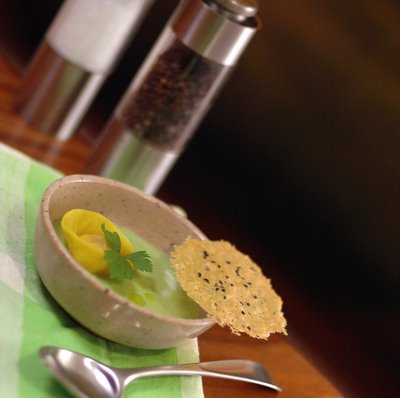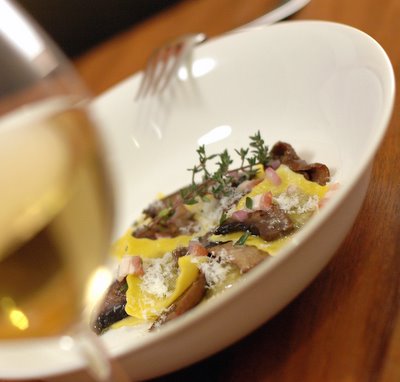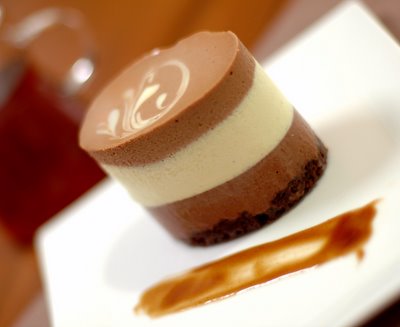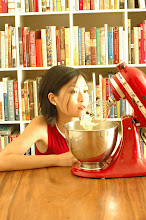Arroz Negro

I had bought some very fresh squid from the wet market. As luck would have it, these beautiful specimens, save one or two, pretty much had their ink sacs intact. At any rate, there was more than enough to deeply stain and richly flavour plenty of rice pitch black for two. While those little plastic sachets labelled nero di seppia do an admirable job in a pinch, there's nothing like the natural ink to infuse a dish with the taste of the sea. So black rice it would be for dinner.
Why a Valencian arroz negro and not a Venetian risotto nero, equally handsome a dark horse?
I was down to the last cupful of arroz bomba from Calasparra - remains of the thoughtful gift from a friend recently returned from Spain - the low-yielding short grain rice variety that's notoriously challenging to grow but makes up for its trouble by being remarkably good eating; bomba grains are thirsty things, majestically swelling up to about four times their original volume when cooked (as compared to the two to three times of more mortal rices) yet retaining firmness when fully done, equally celebrated for their flavour absorbtion capacity and superb texture. Last cupfuls of hard-to-come-by commodities, in my books, deserve extra TLC in the form of a special recipe, a befitting farewell, a last supper of sorts until the next gift of rare rice comes to pass.
(Digressing, Vialone Nano, rich as it is in amylose - the firm inner starch - is terrific for creating a risotto nero with the elusive combination so prized in Venetian-style risotti, that of all'onda, or loose rippling consistency, yet with kernels that offer a satisfying resistance to the bite.)
I am also completely besotted with José Andrés' Tapas: A Taste of Spain in America. To be precise, his recipe for arroz negro con calamares has been haunting my waking hours as soon as I set eyes on it. Now so it seems, it was destined to be the first dish I try from the book. Deliberating what first to make from a volume brimming with so many fabulous dishes is no walk in the park - for a dawdler like me, nothing beats having your choice cut out for you. You may expect a book by a protégé of Ferran Adrià's to be full of the technical wizardry and culinary pyrotechnics that have put El Bulli on the map. Instead, the book is surprisingly accessible - not a liquid foam or siphon in sight - a standout collection of recipes that manages to strike the perfect note between traditional and avant-garde.
The true star here, as with all Spanish arroces from caldero to paella, is indubitably the rice, each grain impregnated with the lush depth of flavour and heady complexity that's mounted by layering a fragrant stock (in this case, fish stock) over a thick tomato and onion sofrito, the whole permeated by and therefore showcasing just one or two main ingredients (here, squid and its ink). Garlic, parsley and olive oil pounded to a fragrant paste and stirred in halfway through the process, add nuance and roundedness to the arroz negro.













